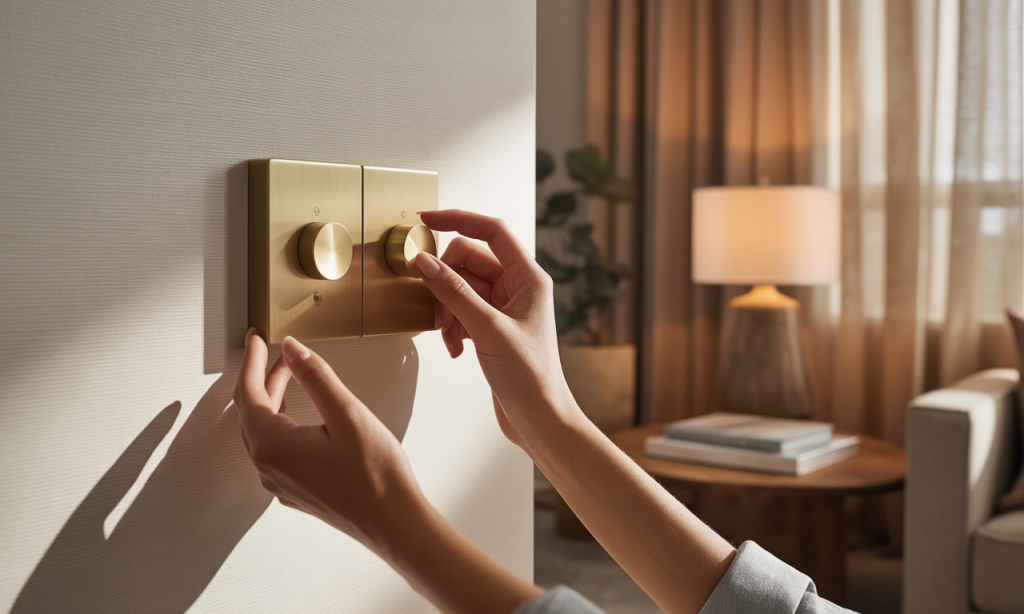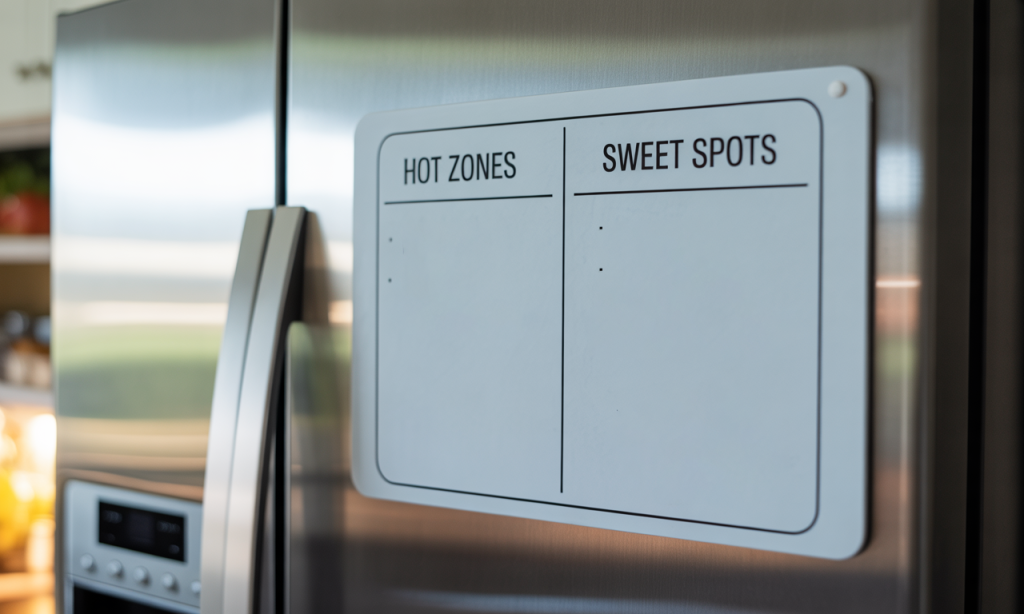New Places, New People: Environments That Make Connection Easier

Context cues behavior. Swap the settings that stir conflict for spaces and friendships that make calm, fun, and honest talk feel natural. You don’t have to overhaul your personality to change the temperature of your marriage—you can change the room, the route, the routine, and the crowd. As with all of our “you can start today” tools, the point is simple: set the scene for the relationship you want, then repeat it until it becomes your new normal. You can always find this article at New Places, New People.
 Note: set the scene for the relationship you want. If any setting feels unsafe or crosses core boundaries, choose safety and step out.
Note: set the scene for the relationship you want. If any setting feels unsafe or crosses core boundaries, choose safety and step out.
Why New Places, New People Work (Behavior Follows Context)
 If you’ve ever noticed that you fight in the kitchen but laugh in the car, you’ve already felt the truth behind New Places, New People: environments cue behavior. Lighting, noise, posture, even who is around you—all of it nudges your nervous system toward either defensiveness or openness. When you keep returning to rooms and routines that spike stress, your body anticipates danger long before words begin.
If you’ve ever noticed that you fight in the kitchen but laugh in the car, you’ve already felt the truth behind New Places, New People: environments cue behavior. Lighting, noise, posture, even who is around you—all of it nudges your nervous system toward either defensiveness or openness. When you keep returning to rooms and routines that spike stress, your body anticipates danger long before words begin.
That’s why switching the where and the who often changes the how without anyone delivering a lecture. A walk-and-talk route lowers reactivity; a quiet coffee shop invites gentleness; a couple-friend who practices repair makes apologies normal.
If you want a broader map for how daily patterns shape outcomes, you’ll find it in How We Built This (Mess): See Your Marriage as a System—a systems lens that pairs perfectly with environmental design.
New Places, New People Starts with an Environment Audit
 Before picking new spots, identify the hot zones and sweet spots you already have.
Before picking new spots, identify the hot zones and sweet spots you already have.
Hot zones (common conflict amplifiers):
- Kitchen at rush hour: hunger + deadlines + dishes = short fuses.
- Bedroom late at night: fatigue + phones = blurry boundaries.
- Car during traffic: trapped posture + noise = rising tension.
- Family group text: opinions + interruptions = misread tone.
- Scrolling on the couch: silent disconnection that mimics rest but drains it.
Sweet spots (connection multipliers):
- Neighborhood walk: shared rhythm and forward gaze reduce threat.
- Coffee corner nook: soft light, less foot traffic, easy eye contact.
- Porch or balcony: outdoor cues slow speech and soften tone.
- Bookstore or garden center: playful browsing creates easy sharing.
If your digital spaces are spiking cynicism or comparison, a gentle reset like Retrain Your Feed: Digital Inputs That Quietly Shape Your Marriage helps you swap contempt-bait for repair-friendly cues.
Design Connection-Friendly Rooms at Home
 You don’t need a renovation; you need a few behavioral nudges that make the next kind choice easier than the old habit.
You don’t need a renovation; you need a few behavioral nudges that make the next kind choice easier than the old habit.
Kitchen: Add a small speaker and create a “reset playlist” that automatically starts at 5:30 p.m. Keep a bowl of nuts or fruit within reach (hunger management is conflict prevention).
Living room: Put a simple “phone basket” by the couch; agree that when the basket is out, two phones go in—ten minutes minimum.
Bedroom: Replace harsh overheads with a warm lamp; put a notepad on the nightstand for “park-it-for-tomorrow” thoughts so they don’t become 11 p.m. debates.
Entryway: Keep shoes and bags corralled; clutter competes with connection.
When turning these ideas into sustainable routines, lean on shared systems that keep burden fair. Beyond 50/50: A Better Plan Than Keeping Score shows how to use shared minimums, visible tasks, and a weekly rebalance so one person doesn’t carry the entire “home vibe” job.
New Places: Micro-Venues That Lower Defensiveness
 Certain spaces reliably dial down threat and dial up warmth. Try these micro-venues and notice how your conversations change:
Certain spaces reliably dial down threat and dial up warmth. Try these micro-venues and notice how your conversations change:
- Walk-and-talk routes: Choose a flat, familiar loop (15–25 minutes). Forward gaze + shared pace reduces perceived confrontation.
- Third places: Coffee shops, libraries, botanical gardens, and quiet parks invite soft voices and curious questions.
- Activity-first spots: Plant nurseries, art-supply aisles, museums with benches—your hands and eyes stay engaged while your guard drops.
- “Window shopping” drives: Scenic roads or ocean/lake loops provide a steady background that helps you stay regulated.
You’ll invite better when you don’t pressure. For language that creates pull not push, borrow phrases from Invite, Don’t Insist: “I’m stopping by the new garden shop at 4. Want to wander for ten minutes and then grab tea?”
New People: A Circle That Rewards Repair
 Relationships are contagious. If your closest circle normalizes sarcasm, disengagement, or “ditch and replace,” your bond will feel more fragile. New People doesn’t mean dumping old friends; it means adding couples and mentors whose defaults are kindness, curiosity, and accountability.
Relationships are contagious. If your closest circle normalizes sarcasm, disengagement, or “ditch and replace,” your bond will feel more fragile. New People doesn’t mean dumping old friends; it means adding couples and mentors whose defaults are kindness, curiosity, and accountability.
What to look for in couples-friends:
- They repair; you see apologies and follow-through.
- They protect their spouse in public (no mocking).
- They enjoy each other—little squeezes, shared glances, private jokes.
- They handle differences without humiliation.
- They have hope that’s grounded, not performative.
Move at a human pace. Adding community can be tiring at first; Patient Leadership: Keep Moving When Timelines Don’t Match will help you set a realistic cadence so you don’t burn out or pressure your spouse.
Scripts for Suggesting New Places, New People (Without Pressure)
 Use low-stakes, time-boxed invites that are easy to accept—or decline—without anyone losing face:
Use low-stakes, time-boxed invites that are easy to accept—or decline—without anyone losing face:
- “I’m walking the neighborhood loop at 6:15 for about 20 minutes. If you’re free, I’d love company.”
- “I want to check out the new bookstore for ten minutes. Want to browse together and then grab hot chocolate?”
- “Ben and Rosa invited us to their game night Saturday. We can leave by 9:30 if we’re tired.”
- “I’m going to try the botanical garden this Sunday at 3. If you want to join, I’ll bring the passes.”
If defensiveness pops up—yours or theirs—convert it into direction with the pause-label-ask routine in Trigger to Teacher so the conversation stays calm.
Digital Settings Are Places Too (Curate the Feeds That Train You)
 Your phone is an environment that constantly primes your nervous system. If your feed is full of outrage or “relationship doom,” it will quietly rewrite your expectations. Curate it:
Your phone is an environment that constantly primes your nervous system. If your feed is full of outrage or “relationship doom,” it will quietly rewrite your expectations. Curate it:
- Mute accounts that reward contempt, gotchas, or cynicism.
- Follow voices that model boundaries, kindness, and repair.
- Batch notifications so your brain gets real rest.
- Create a “wind-down” folder of calming apps (reading, prayer, music).
A 14-day reset in Retrain Your Feed gives you a step-by-step plan to swap inputs that drain you for inputs that strengthen you.
Rituals: Repeatable Contexts That Make Connection the Default
 Once you find a spot and a crowd that works, turn them into rituals so connection becomes the default, not the exception:
Once you find a spot and a crowd that works, turn them into rituals so connection becomes the default, not the exception:
- Porch reset: ten minutes on the porch after work, no phones, one question each: “What made today heavy? What made it light?”
- Thursday bookstore loop: browse separately, reunite in poetry or travel aisle, share one page that made you smile.
- Sunday garden stroll: 20–30 minutes with a simple rule: planning talk only in the last five minutes.
- Monthly mentor brunch: one older couple you respect; share one win and one “we’re stuck here.”
If you want these rituals to feel solid and credible, use the follow-through routines in Say Less, Do More and track how the rituals accumulate over 30/60/90 days with Consistency Clock.
Make Home Conversation-Friendly (Tiny Tweaks, Big Payoffs)
 You can make the same room feel like a different place with a few cues:
You can make the same room feel like a different place with a few cues:
- Sound: soft background music or white noise lowers reactivity.
- Scent: a single candle or fresh air can mark “we’re in connection mode.”
- Seating: sit at 90 degrees instead of face-to-face for hard topics.
- Timing: schedule heavy talks before 9 p.m. and after snacks.
When a hard conversation still goes sideways, repair quickly using the five-part, 60-second template in Apologize Right so you don’t teach the room that “talk = fight.”
Protect Energy: The True Cost of Swapping Environments
 Changing settings takes energy: planning, driving, adjusting to a new crowd. Budget for it. Build buffers (leave ten minutes sooner; pack snacks; keep an umbrella in the trunk). Expect that new social settings will be tiring at first; that’s normal.
Changing settings takes energy: planning, driving, adjusting to a new crowd. Budget for it. Build buffers (leave ten minutes sooner; pack snacks; keep an umbrella in the trunk). Expect that new social settings will be tiring at first; that’s normal.
For a clear-eyed look at the effort required—and how to avoid burnout—read The True Cost of Change after this article. It will help you set a pace that’s humane for both of you.
Safety and Boundaries: Know When to Leave the Room
 New Places, New People is not a permission slip to stay where harm happens. If a setting includes threats, humiliation, coercive drinking, or any form of violence, your next right move is to leave and get support. When lines feel fuzzy, learn the difference between ordinary friction and danger in Friction Isn’t Abuse, and if you recognize red flags, go straight to When It’s Actually Abuse.
New Places, New People is not a permission slip to stay where harm happens. If a setting includes threats, humiliation, coercive drinking, or any form of violence, your next right move is to leave and get support. When lines feel fuzzy, learn the difference between ordinary friction and danger in Friction Isn’t Abuse, and if you recognize red flags, go straight to When It’s Actually Abuse.
A 30-Day New Places, New People Pilot (Simple, Repeatable, Kind)
 Use this four-week on-ramp to test spaces and friendships that make connection easier.
Use this four-week on-ramp to test spaces and friendships that make connection easier.
Week 1: Audit & One Swap
- List three hot zones and three sweet spots.
- Make one environmental swap (e.g., phone basket + lamp for evenings).
- Do one walk-and-talk (15–20 minutes) and note how it felt.
- Invite one couple or mentor for coffee next week (low-pressure, time-boxed).
Week 2: Ritualize & Reduce Triggers
- Turn the walk into a recurring slot (same days/times).
- Add one third place visit (bookstore, garden center) for 15 minutes.
- Start a 14-day social media curation using Retrain Your Feed.
- Set one money/time buffer so going out doesn’t create chaos (earlier dinners, simple meals).
Week 3: Expand People, Shrink Pressure
- Attend a small community group or invite a couple-friend for board games.
- Use invite, don’t insist language for every social ask.
- Schedule a porch reset twice this week (ten minutes, no phones).
Week 4: Review & Lock-In
- Keep what worked, shrink what didn’t.
- Add one monthly ritual (mentor brunch, Sunday garden, bookstore loop).
- Track 30/60/90 consistency with Consistency Clock.
Troubleshooting: What If It’s Awkward, Tiring, or Met with “No”?
- “They said no to all my ideas.” Keep invites short and specific: “Ten minutes?” not “Let’s revamp our social life.” Rotate options and times. If “no,” receive it kindly and try again next week. The pacing in Patient Leadership helps here.
- “I feel self-conscious in new spaces.” Start with quieter, low-demand venues (library corners, scenic loops). Sit side-by-side instead of face-to-face.
- “Our friends joke harshly.” Offer a gentle boundary: “We’re trying not to roast each other.” If it persists, shorten visits and add “repair-friendly” friends to the mix.
- “We ran out of things to say.” Use an object to spark conversation (open a book and share a paragraph). Or bring one question card and answer it while walking.
- “The room still feels cursed.” Move the talk to a different place for a month to retrain the association. In the old room, only do light tasks and laughs.
Case Snapshots: Environments That Changed the Conversation
 The Kitchen Truce
The Kitchen Truce
Dinner hour was their battleground. They added a 5:30 playlist, pre-dinner snacks, and a ten-minute reset on the porch before starting to cook. Arguments dropped by half in two weeks.
The Library Loop
They discovered that sitting at a library window table with two magazines made honest talk easy. Now they go every other Thursday for 25 minutes—no pressure, no agenda.
Mentor Brunch
A seasoned couple they admired (steady, kind, quick to repair) became a monthly brunch. The younger pair began using the same two-sentence repair they saw modeled.
Walk-and-Talk + Garden Center
On weeks with heavy topics, they walk first, then stroll the garden center. Movement softens the hard edges, and browsing gives natural pauses.
Linking Environments to Everything Else You’re Building
 Changing rooms and crowds isn’t a replacement for skills; it’s a multiplier for them. Set the scene, then stack the habits you’re already practicing:
Changing rooms and crowds isn’t a replacement for skills; it’s a multiplier for them. Set the scene, then stack the habits you’re already practicing:
- Calm tone + porch ritual = easier starts. (See Non-Reactive Strength for the 90-second reset.)
- Clean repairs + third places = faster trust rebuilds. (Use Apologize Right for the 60-second template.)
- Fair systems + home tweaks = less resentment. (Run a weekly rebalance from Beyond 50/50.)
- Invites without pressure + friendly couples = more yeses. (Steal lines from Invite, Don’t Insist.)
When you’re ready to count the time, energy, and money these changes require—so you pace yourself wisely—read The True Cost of Change next.
A Closing Word on Hope (and Realism)
 You don’t need to be different people to have different conversations. You need different cues. Choose new places that lower defensiveness. Add new people who celebrate repair. Then let repetition do its quiet work. Environments train us while we’re not looking—so make yours your ally. If you want gentle guidance for going first without over-functioning, the posture in Lead Without Permission pairs beautifully with the environmental shifts you just planned.
You don’t need to be different people to have different conversations. You need different cues. Choose new places that lower defensiveness. Add new people who celebrate repair. Then let repetition do its quiet work. Environments train us while we’re not looking—so make yours your ally. If you want gentle guidance for going first without over-functioning, the posture in Lead Without Permission pairs beautifully with the environmental shifts you just planned.


